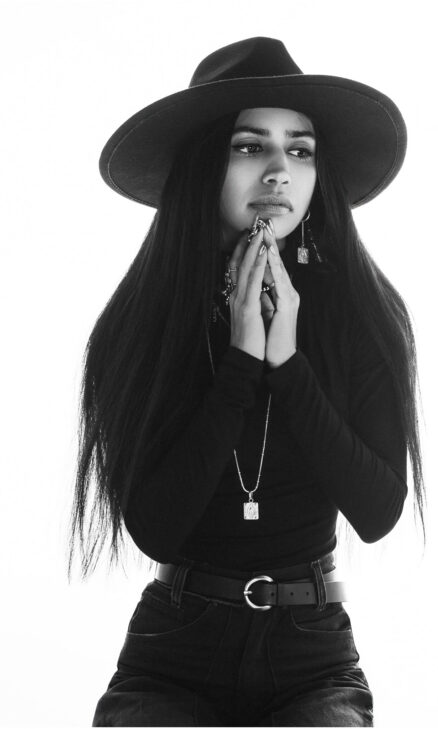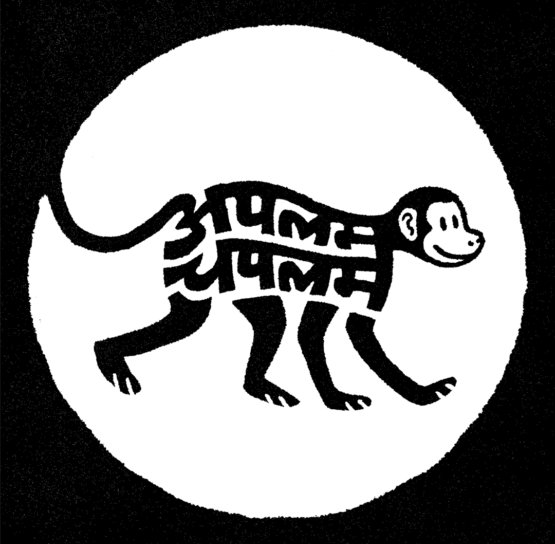Mandovi Menon
The pioneering media entrepreneur whose authentic storytelling is meant to drive meaningful change.
Mumbai-based creative director, writer and media entrepreneur Mandovi Menon is known for bringing an authentic and unapologetic voice to everything she does. In spearheading several pioneering publications, platforms and campaigns in India, her work has continuously expanded the conversation around youth culture, as well as topics that aren’t widely covered in the mainstream. Particularly sex and sexuality, women and children’s rights, and juvenile justice. In an incredibly vast and constantly changing media industry, Mandovi leverages the power of truth to spark deeper dialogues towards social change — resulting in honours like a place on Forbes Asia’s 30 Under 30 list, Asia Society’s 21 Young Leaders Fellowship, and Vogue Global Network’s ‘50 Young Trailblazers Around The World.’ Some of her most recognised work includes Homegrown, Apalam Chapalam (a multilingual storytelling platform for urban, underprivileged children during lockdown), Dirty Magazine, and The Minor Project, a public dialogue initiative for UNICEF which took a unique mixed media storytelling approach to shed light on child sexual abuse, corporal punishment and domestic violence. She has also translated her lens into developing IPs and campaigns for brands and institutions like Dasra, HDFC Life, Nike, Puma and more. Supported by this expansive experience, Mandovi is currently building Egodeath, a strategy and design practice based out of India and Dubai, working with brands and institutions interested in culture-building and social impact. She moonlights as a writer of short stories, poetry, and children's books and is touted as one of the most credible voices on urban youth culture and identity in India today.



Mandovi speaks to Blur The Border :
Blur : Do you have a definitive process while creating? Are there any habits or rituals that help you get into a creative mindset?
Mandovi : I do a lot of different things, so the process varies accordingly. When I'm creating strategy or storytelling for brands for example, I'll spend significant time understanding the context of a project–cultural, historical, experiential, personal–to see where it fits against the current times. Distilling and translating what is relevant to ‘right now’ is a big part of my job here. Some of this happens in conversation with experts on different subject matters; other parts happen through my own private reading, explorations, and reflections. If it’s editorial work, some of the above still applies, but I lean into intuition more when it comes to the formats and shape stories end up taking, which in turn end up influencing design or other disciplines involved.
All rules go out the window when I'm writing fiction or poetry though. Here I end up feeling more like a vessel because the process is not as conscious. Often it starts with a title, or a single sentence, and everything else just flows out of that. Rituals keep changing but having a clear routine acts as scaffolding for me. I find a lot of freedom in designing my days because it allows me to move between different ‘activities’ when I'm feeling stuck and consistent creativity requires that momentum. I’ve also found my best thinking tends to happen when I'm playing the piano, running errands, or driving; so I hold a lot of value for doing little things that don’t serve some obvious, creative goal. Half-conscious states suit my otherwise very overactive mind.
Blur : What role does the environment play in your work or fuelling your creativity?
Mandovi : Environment is everything! Even if we end up executing ideas individually within our own disciplines, it's still in response to a place, a person, a moment in time. My city and community here in Bombay are probably the most important part of this, so I prioritise spending quality time with people whether it's family, friends, or even interesting strangers in a new setting. A lot of my inspiration comes from observing the human experience (even the bits other people might consider mundane). What people care about, how they move through the world, or why they might be motivated to do things a certain way. Whether that's on a dance floor, or on the street is irrelevant. I have to go out into the world and interact with things firsthand to have any real stake in what I say about it.
Blur : How has your journalistic style evolved since you started out in the media industry and how do you view this evolution?
Mandovi : I don’t consider myself much of a journalist at all. I lack the education for traditional reporting and I can barely stomach reality as it is these days. But my writing has evolved into a much more conceptual, mixed media style of storytelling over the years. Some of that may have been in response to the changing landscape of the industry but it actually came very naturally. I always start with the written form when I'm developing an idea, but I tend to think quite visually so I’ll often end up storyboarding or moodboarding them in their initial stages prior to working with artists from other disciplines. Creative Direction was a natural outcome of this trajectory. Words on their own felt limiting for a lot of what I was upto–a large portion of my work translates into visual imagery, graphic design, physical experiences and more–so I was always thinking and executing beyond the form. I just didn’t feel ready to own that title till later in my career.
Blur : How do you balance the need to be creative with the practical aspects of being a professional?
Mandovi : I’m not very good at separating the two! Nor am I convinced there’s a need to, yet. The only distinction I maintain is between what has commercial responsibilities and what is purely for passion so I can structure my time more consciously. When it comes to the actual ‘making of things’ though, I find that it’s all drawing from the same reserves, and it all feels inherently personal. In my experience, both aspects are mutually reinforcing. A lot of the work I do for love (aka I’m not trying to make a living out of it) has actually brought amazing opportunities to work on interesting commercial projects with people who share similar thinking; and a lot of the worlds and learnings I get introduced to by the latter inspire the need to be creative in a very different capacity, all over again. It comes back to the freedom I find in creating containers for different things; then being able to move between them to maintain some state of flow.
Blur : If you were to collaborate with other artists, outside of your discipline, what is one collaboration you would love to do?
Mandovi : I've already been very lucky to work deeply with filmmakers, visual artists, fashion designers, musicians and many other disciplines. That’s probably my favourite part of what I do. But I think an animator or a ceramicist–specifically ones with interest in building characters and worlds for children–would be highest on my list currently.
Blur : In what ways do you think Indian youth culture has evolved over the past decade?
Mandovi: Shorter to list out the ways that it hasn't! Honestly it's wild to see where we are today because when I created my first media company a decade ago to speak to the idea of youth culture, the term wasn't well understood, let alone documented. Now we're already witnessing its peak commercialisation, which has its upsides and downsides. The evolution I personally find most interesting and unique to India is the increasingly wide representation of linguistic cultures and identities across the spectrum of creators and media who occupy this space. Regional languages are such rich vessels, and I think it’s creating a very interesting cross-pollination of ideas, aesthetics, subcultures and stories through access that we lacked before. I also like that we’re seeing this influence play out in both independent and mainstream spaces. There’s a lot more to say about this, but I'll save that for a different format.
Blur : How do you see the role of journalism and media evolving in today's rapidly changing digital landscape?
Mandovi: There's a doomsday version and an eternal-optimist response to this. As Arundhati Roy recently said, ‘who controls the technology, controls the world.’ At this point it goes without saying that truth has become nearly impossible to discern in the digital landscape and trust in most journalism has eroded. Between political manipulation, unchecked concentration of power, and some pretty concerning AI integrations, it’s going to take generations of education and a very strong people's movement with institutional backing to be able to respond to these shifts ethically or systemically. But at the same time, working on a print publication these past few years has given me firsthand confidence that in reality, people are hungry for depth and new perspectives, even if data seemingly points in a different direction. There is also an increasing appetite and acceptance for voices and formats that couldn’t make their way into the mainstream even a few years ago. I see more independent and citizen-led platforms cropping up, and we’ll have to wait and witness if this heads towards a consolidation or fragmentation of the industry as a whole. Personally, I'm rooting for the latter. We need radically new blueprints for making media sustainable again, and independent efforts are the ones who can lead the way.
Blur : What advice would you give to aspiring journalists and media entrepreneurs looking to make an impact in the industry?
Mandovi: I'm more comfortable speaking to writers or storytellers than I am to journalists or media entrepreneurs but I think my advice applies quite universally. Figure out what ‘impact’ or ‘success’ looks like to you and go from there. There’s no wrong answer. Just as an example, understanding this helped me realise I was willing to steer clear of scale (with respect to running huge teams, or aiming for billions in viewership or earnings) in service of maintaining my own creative freedom, or certain values that mattered to me. That meant compromising on other things, but the point is you have to figure out what that looks like because constantly reacting to external stimuli is not sustainable. Nor is it what the world needs. Other than that, don’t be afraid to learn new systems, mediums or tools. Adapting with enthusiasm (without losing your core principles) is the key to surviving and thriving. For other storytellers, learn to love the process of making more than any outcomes. We can never control the latter, it’s just something to learn from. And invest time in building real-life connections and community. These are some of the important roots. Build and branch out from here as you like!
Know more about Mandovi:
Instagram: @mandopie24